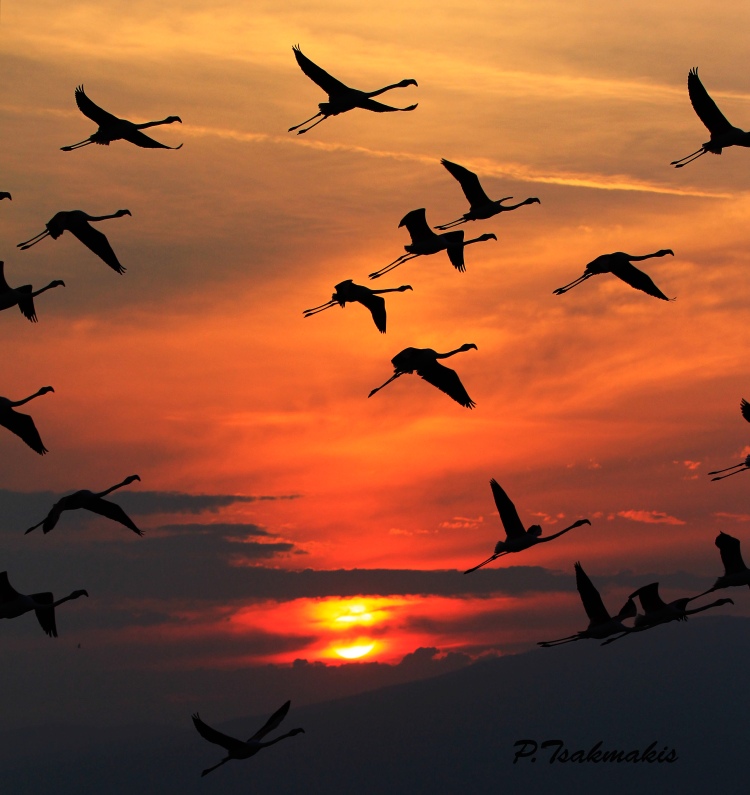
Lesvos lies in the far east of the Aegean sea, facing the Turkish coast and at the narrowest point, the strait is about 5.5 km wide. It is roughly triangular in shape deeply intruded by the gulfs of Kalloni and Gera.
The island is forested and mountainous with two large peaks, Mount Lepetymnos at 3,176 ft and Mount Olympus at 3,173 ft. The island’s volcanic origin is manifested in several hot springs and the two gulfs.
Lesvos is verdant, aptly named Emerald Island, with a greater variety of flora than expected for the island’s size. Eleven million olive trees cover 40% of the island together with other fruit trees. Forests of mediterranean pines, chestnut trees and some oaks occupy 20%, and the remainder is scrub, grassland or urban.
It is the third largest Greek island (next to Crete and Evia). The mass tourism impacting much of the Mediterranean basin has bypassed Lesvos and it is only in the last decade or so that tourism has taken off, but it remains at a low level, even at the ‘main’ resorts, none of which are much more than villages.
Lesvos is a beautiful, lush, green island with an amazing variety of scenery :
- green fields
- olive grove covered hillsides
- barren volcanic mountainous areas
- rich pine and sweet chestnut woods
- beautiful beaches
It is dotted with traditional villages clinging to hillsides. The whole island abounds with birds, flowers and other wildlife to rival anywhere in Europe. Its people are warm, welcoming and undoubtedly the friendliest in Greece.
Size: 1,630 sq.km, has a population of c.87,000 and the capital is Mytilini.
Lesvos is famous for :
Olive oil – the finest in the world, produced from the over 11 millions olive trees. There is the Museum of Olive Oil Production in Agia Paraskevi housed in an old communal olive press.
Great food – fresh fish and seafood, along with traditional Greek dishes. Always a basket of fresh bread, a greek salad, fried prawns, zucchini chips and calamari.
Aristotle – born in Stagira on the Northern Aegean coast. A pupil of Plato, Aristotales collective works are considered to be the bedrock of Western philosophy. Aristotle spent many years on Lesvos around the Kalloni Bay where his findings were formative in his writings on biology and zoology. He is considered to be the father of biology and there is a small plinth mounted bust in Skala Kallonis square by the harbour recognising one of the true greats of classical Greece. In 343 BCE Aristotle was summoned by King Philip II of Macedonia to tutor his son Alexander.
Greek poet Sappho – little is known about the life of Sappho. She was born to an aristocratic family on Lesvos. She spent most of her adult life in the city of Mytilene where she ran an academy for unmarried young women. She earned great prominence as a dedicated teacher and poet.
The Petrified Forest – Lying between Ipsilou and the village of Sigri, the Petrified Forest Park covers an area of 28,6 ha and is part of the worldwide UNESCO Geopark network. The park sites within a wider 15000 ha region between Sigri, Andissa and Eressos. The forest is truly spectacular, some lying trees are up to 22 metres in length and even more extraordinary there are trees that remain partially standing, some up to 7 metres. It is not unusual to drive past white plaster castings covering new discoveries. More information can be found here – Lesvos Geology
Hot springs – there are a number of hot springs around the island two of them being Polichnitos and Eftalou. Both have facilities for people to visit and enjoy, if that is your thing!
Ancient sites
Here’s just a taster of the many available that can be found with a bit of research on the internet, or, the use of a good travel guide.
Medieval Castle – Mytilene is the capital of Lesvos and the medieval castle in Mytiline is considered as one of the best-preserved castles in Eastern Mediterranean. The Old Town of Mytilene lies below the castle.
Ancient Theatre – on the northern side of Mytilene there is the ancient theatre of Lesvos, one of the largest in Greece. It was built around the 3rd century B.C. and has a capacity of about 15,000. It has not been entirely excavated yet.
Archaeological Museum – the Archaeological Museum in Mytilene is an interesting museum to learn about the history of the civilisations in northern Aegean and admire findings from the Neolithic to the Roman Times, such as prehistoric items, parts of ancient temples, jewellery and coins.
Mosques – in Mytilene, which combines West and East elements due to the history of the island, stand two mosques. Valide mosque was built in 1615, while Yeni mosque, the largest mosque of the island, is an important historical site of the 19th century.
Roman Aqueduct – about 6 km from Mytilene is the Roman Aqueduct from the late Roman times (2th-3rd century A.D.). The aqueduct with the arches used springs, underground channels and gravity to carry water to various villages in Lesvos.
Monastery of Ipsilou – it is the oldest monastery of Lesvos, built in the 12th century A.D and has the looks of a castle, and inside has many significant Byzantine icons, holy vessels and manuscripts. The road up and around the peak which the monastery is built on is one of the primary birdwatching sites on the island. There is a military location just below the monastery so be careful to not to take any photographs or show a long interest in this.
This is not intended to be an extensive list, do your research and you’ll be rewarded.




